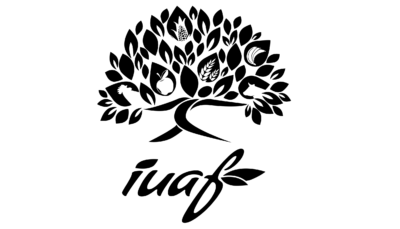Agroforestry in Sweden
The traditional agroforestry in Sweden was silvo-pastoral systems, where animals; cattle, sheep and goats were grazing in the extensive forests. Historically, these areas were commonly owned and free ranged, whereas meadows and cultivated areas and villages were private and fenced. This agroforestry system have had a great economic importance, it was a prerequisite for the economy in the farm households as it contributed with fodder and several other resources and services. Trees and bushes were used for food, feed, fuel, wood and construction material. Charcoal, potash and tar were also produced. Bark, leaves and nuts from oak (Quercus robur), hazel (Corylus avellana) and beech (Fagus sylvatica), mushroom and berries were important food products. The animal grazing had a large impact on the structure and composition of the forests. The densities of trees and bushes varied due to grazing pressure and local ecological conditions, ranging from dense to nearly open. Coppicing, where trees and bushes were cut down to a 0,3 m or less from ground level, to encourage a multitude of new shoots or pollarding, where tree stems were cut off about 2 m above ground level to encourage lateral branches was two common means to harvest leaves and branches for winter fodder.
The system of summer farms has also been important for the agricultural expansion and economy in the north of Sweden during 1500 to 1850. These systems comprised free grazing in mountainous areas for cattle, sheep and goats kept for meat, milk cheese and butter production. Animals were moved to the farm in early summer and part of the farming family stayed on the site during the summer. The work at the summer farms were often organized cooperatively in the villages and young girls or women where employed for the activity. Today these activities are appreciated mainly for their cultural and natural values, and the management is supported by subsidies in the CAP. There are about 250 summer farms in Sweden today, using approximately 15 000 ha and about 3 000 heads of goats, sheep and cows are kept.
Reindeer husbandry is another land use practice that is traditional to Sweden. Together with the neighboring countries Norway and Finland reindeer husbandry stands for the major part of agroforestry in Europe, when it comes to the area.
Semi-natural pastures with bushes and trees are agroforestry systems that due to their contribution to natural values, e.g. biodiversity, are described as important to reach the Swedish national environmental goals such as; “Rich agricultural landscape” and “Rich flora and fauna”. According to Statistics Sweden (2019), there was about 452 000 hectares of semi-natural pasture in Sweden 2016.
Today there is a growing group of farmers developing forms of agroforestry systems, as well as research to evaluate them. These systems are based on agroecological theories. Examples are; edible forest gardens, multi species orchards and hazel plantations, hens and grazing animals in semi-natural pastures and forest, alley cropping and development of perennial vegetable crops.
Take a look at Swedish agroforestry
Agroforestry associations in Sweden
Agroforestry Sverige (Agroforestry Sweden)– started in 2016 and is an association with the aim to promote networking and the spread of agroforestry in Sweden. The members are mainly practitioners and public, who are interested in environmental and climate friendly food production. The association has around 45 paying members, but reaches around 300 with the newsletter and almost as many on the Facebook page. The association arranges a longer meeting every other year, and smaller activities or field trips the other years.
Skogsträdgårdsodlarna (The Forest Gardeners) – a community for sharing ideas, knowledge and experiences about forest gardens. The community is structured around a Facebook group Skogsträdgårdsodlarna with about 3 800 members. They also have a map of forest gardens in Sweden that one can visit. At the moment there are about 50 forest gardens reported on the map.
Permakultur i Sverige (Permaculture in Sweden) – an association to promote the vision within permaculture for a sustainable society and that work with adaption and development of permaculture under Swedish conditions.
Förbundet Svensk Fäbodkultur och utmarksbruk FSF – gathers the Swedish summer farm movement and works to preserve, promote and develop the summer farms, the summer farm culture and the use of other natural fodder fields.
Relevant agroforestry websites
https://agroforestry-vattholma.se/
http://www.ridgedalepermaculture.com/
https://bokeslundsgarden.wordpress.com/about/
http://skogstradgardensvanner.se/
SAFE – SITES Agroecological Field Experiment
Assessing ecosystem services in perennial intercropping systems – participatory action research in Swedish modern agroforestry Report
Agroforestry policies in Sweden
The agroforestry measure is not implemented in Sweden, and agroforestry is therefore not very visible in CAP and the rural development program. There are however traditional management types that classify as agroforestry systems which are included in the program in measure 10 (agri-environmental measures). Summer farms get support within this measure, as well as semi-natural pastures. EU-subsidies for semi-natural pastures are based on the ecological and cultural values on the land, and there are different levels of payment depending on the values. Higher payment can be received after inventories have established these values, and management requirements have been set. Pollarding can also receive support. For some types of semi-natural pastures, for example with many trees, there is only support from the rural development program (pillar 2), and not direct payments (pillar 1). Such is the case with silvo-pasture.
Due to the greening of the direct payments farmers may be required to have ecological focus areas. It is possible to choose salix as an ecological focus area. Salix could be used as part of an agroforestry system on arable land.
It is possible to apply for support that is not based on area in the rural development program and in LEADER. Projects or investments related to agroforestry are not specifically mentioned, but could potentially get support this way, if used creatively.
Source: EURAF







